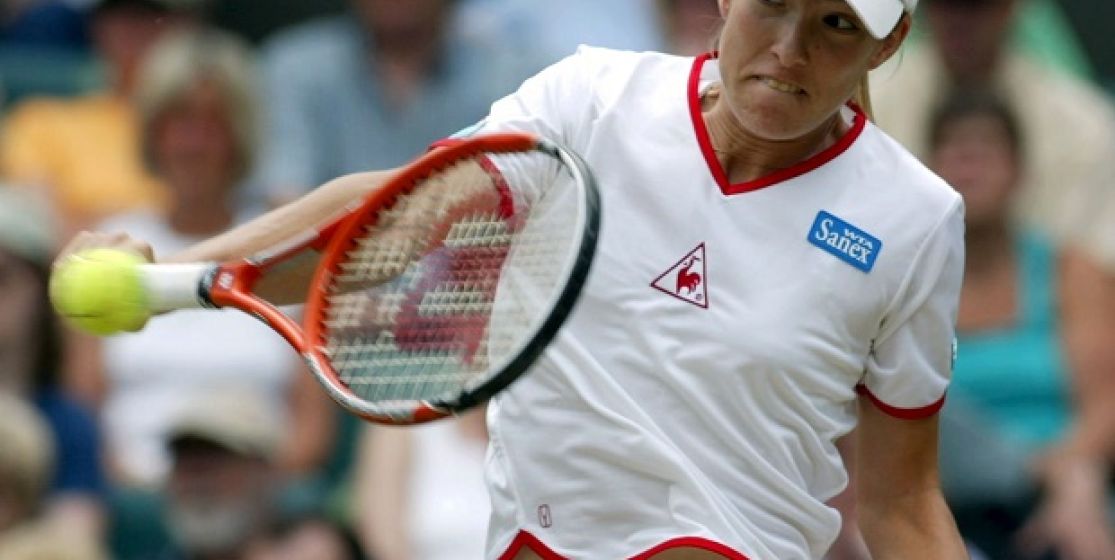With Roger Federer, Stan Wawrinka and Grigor Dimitrov among the semi-finalists, the Australian Open has become the second Grand Slam tournament (in the 21st century) to have three one-handed backhands in the final four, after the 2007 Australian Open. A good opportunity to look back on these retired players who made turned their backhands into pieces of art.
Donald Budge
Long before Stan Wawrinka, Richard Gasquet or Tommy Haas, there was Donald Budge. Of course, the gesture at that time looks much less elegant than Roger Federer’s. However, the Oakland-born player, who sadly passed away in January 2000, was the first to use the backhand as an attacking shot. Just as powerful as they were quick, his cannonballs used to considerably trouble his opponents, who, on their side, were looking for more precision. A true rifle.
Rod Laver
He used it both in defensive and attacking phases. For Laver, the one-handed backhand was used to slow down the tempo of the rally, as much as to win it. Between the years 1963 and 1979 (the timeline of his professional career), the topspin backhand wasn’t so democratized. Used from the baseline to gain some time and to run up to the net, it then surprised most journalists and opponents. When it wasn’t sliced, his backhand became super powerful, and a good weapon to finish the point. A very useful tool on clay.
Ken Rosewall
The very definition of elegance. Rosewall was one of the first true references in terms of one-handed backhands. When aesthetics come in play, it’s impossible to forget him. All the more impressive as the Australian, who was naturally left-handed, played with his right hand. Exceptional when he hit volleys, he was known for hitting the ball very early while his body was moving forward. As a result : after a perfectly precise shot, Ken very often used to step to the net. Too bad that there is not enough footage of him.
Arthur Ashe
Ashe didn’t have only one one-handed backhand, but many. And even sixteen, according to the myth. Completely unpredictable, the American could send the ball exactly where he wanted with the back of his right arm and with the strength of his wrist. A creative and spontaneous shot which perfectly illustrates the inventive player that he was. It’s with a backhanded volley that he won the first US Open in history, in 1968. His first Grand Slam tournament.
Stefan Edberg
Like many others, Edberg started playing with a two-handed backhand, before switching to one hand during his teenage years. But along the years, his one-handed backhand became magnificent. To the point where the Swede still considers his shot to have no equivalent. Not even Roger Federer’s. « I think that Roger plays much better than me on many of all the other shots, but I give myself a small advantage on the backhand, he said during a conference in 2014. When I was still playing, I had one of the best backhands of the circuit. I could use it to attack and defend, with many different variations. It was a decisive shot for me. » Nobody can really refute that.
Steffi Graf
For those who had to return it, it was annoying. Terribly frustrating. But for the supporters, it was a real treat. If the German’s one-handed backhand were in fact not-so powerful sliced backhands, they were always very well executed. And incredibly effective. They enabled her to reduce the tempo of the game, to defend with a little more time and to break the rhythm of play. It just goes to show that the most powerful don’t always win. Especially on grass.
John McEnroe
Words aren’t necessary. Everything is in this footage.
Gustavo Kuerten
The smile, but not only. The ever-smiling player had a backhand which was as esthetic as it was effective. If his gesture could have him mistaken for a dancer, it mainly enabled him to push his opponent back far behind the baseline. A lethal weapon on clay, which greatly helped Guga conquer three titles in Roland-Garros. Especially as unlike other players, the Brazilian could hit very powerful shots, getting winner after winner. « He had this way of hitting the ball very hard, with a topspin which would considerably disturb his opponent, explained Patric Hagelauer in ours columns a few months ago. The ball was hit pretty late, which made the analysis all the more difficult. » To this day, many still consider Kuerten’s inimitable backhand as the most beautiful one-handed backhand in history. Not bad for a guy who still used both hands at the age of fourteen.
Gastón Gaudio
He’s one of the less known winners of Roland-Garros in the eyes of the general public. However, it’s an understatement to say that El Gato was pleasant to watch. And moreover, he managed to give his backhand unpredictable trajectories thanks to an unsettling spin. A specialist of the crosscourt backhand, Gaudio would have deserved more recognition and a few more trophies just for this amazing shot.
Justine Hénin
« The best backhand in the world. » These were the words used by John McEnroe to describe Justine Hénin. This spectacular shot was one the Belgian’s favorites. However, it was extremely hard to produce, and was the result of years of training, as explained Luc Bodart, one of her first coaches, one lalibre.be : « It was natural for her, but she managed to master this shot with a huge amount of work (…) Justine was extremely talented. The one-handed backhand which she does is, in fact, prodigiously complex. It’s quite simple : if the gesture isn’t perfect, the ball won’t cross the net. » Unlucky for her opponents, who were always surprised by the power and the quality of the shot, Justine was a perfectionist.






